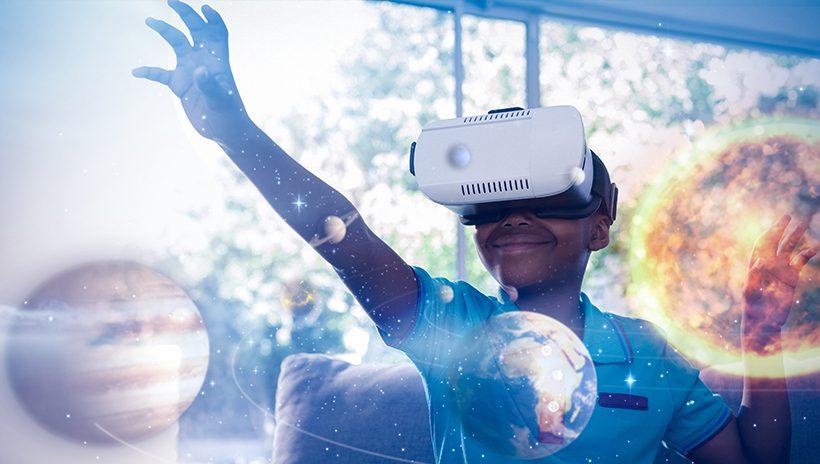E-Learning Virtual Reality: Transforming Education for the Future

Introduction to Virtual Reality in E-Learning
Virtual Reality (VR) is revolutionizing e-learning by offering immersive, interactive educational experiences. Unlike traditional online courses, VR creates a simulated environment where learners can engage with content in a more meaningful way. This technology uses headsets and motion sensors to transport users to virtual classrooms, laboratories, or historical sites. The immersive nature of VR improves engagement, motivation, and knowledge retention among students. It caters to diverse learning styles, making complex topics more understandable through visual and experiential learning. As VR technology becomes more accessible and affordable, educational institutions and organizations are increasingly integrating it into their curriculums. This shift signifies a new era in e-learning, where virtual environments can provide practical, real-world experiences without geographical or financial barriers.
Advantages of Virtual Reality in E-Learning
VR enhances e-learning by providing experiential learning opportunities that traditional methods cannot match. It allows learners to practice skills in a safe, controlled environment, such as medical surgeries or engineering simulations, improving confidence and competence. The immersive aspect helps learners stay focused and reduces distractions, leading to better knowledge retention. VR also fosters collaboration among students through virtual group activities, promoting teamwork and communication skills. Additionally, it makes learning accessible for students with disabilities by offering customized interfaces and alternative sensory inputs. The technology encourages active participation, transforming passive reading or watching into engaging, hands-on experiences. As a result, VR-powered e-learning can boost motivation, improve learning outcomes, and prepare students for real-world challenges more effectively.
Challenges and Limitations of VR in E-Learning
Despite its promising benefits, integrating VR into e-learning faces several challenges. High development and equipment costs can be prohibitive for many educational institutions, especially in underfunded areas. Technical issues like limited hardware compatibility, software bugs, and the need for technical expertise can hinder deployment. Additionally, some learners may experience discomfort or motion sickness during VR sessions, affecting their learning experience. There are also concerns about content quality, standardization, and the effectiveness of VR-based learning compared to traditional methods. Privacy and data security issues arise with the collection of user data during immersive sessions. Addressing these challenges requires ongoing technological advancements, investment, and research to ensure VR’s scalability, usability, and educational value in diverse settings.
Future Trends of VR in E-Learning
The future of VR in e-learning is promising with continuous technological innovations. Advancements like lightweight, wireless headsets, improved graphics, and haptic feedback will make VR more accessible and realistic. Artificial Intelligence (AI) will personalize learning experiences, adapting content to individual needs and progress. The integration of mixed reality and augmented reality (AR) will blend virtual and real-world elements, creating more versatile learning environments. Additionally, collaborative VR platforms will enable remote learners to interact in real-time, fostering global classroom communities. As 5G networks expand, streaming high-quality VR content will become seamless, reducing latency issues. These trends will make VR an integral part of mainstream education, offering dynamic, engaging, and effective learning experiences that prepare learners for a rapidly evolving digital world.
Conclusion: Embracing VR for a Better Learning Future
Virtual Reality is reshaping e-learning by providing immersive, interactive, and engaging educational experiences. While challenges remain, ongoing technological improvements and increasing affordability will make VR more accessible across various educational levels. Its ability to simulate real-world scenarios enhances skill development and knowledge retention, preparing learners for future careers more effectively. As educators and technologists collaborate, VR’s role in education will continue to grow, fostering innovative teaching methods and personalized learning paths. Embracing VR in e-learning signifies a commitment to future-proofing education and making learning more inclusive, engaging, and impactful. The integration of virtual reality into mainstream education holds the potential to transform traditional classrooms into dynamic, experiential learning environments for generations to come.
Source: https://www.marketresearchfuture.com/reports/e-learning-virtual-reality-market-4305
- Art
- Causes
- Crafts
- Dance
- Drinks
- Film
- Fitness
- Food
- Jogos
- Gardening
- Health
- Início
- Literature
- Music
- Networking
- Outro
- Party
- Religion
- Shopping
- Sports
- Theater
- Wellness


